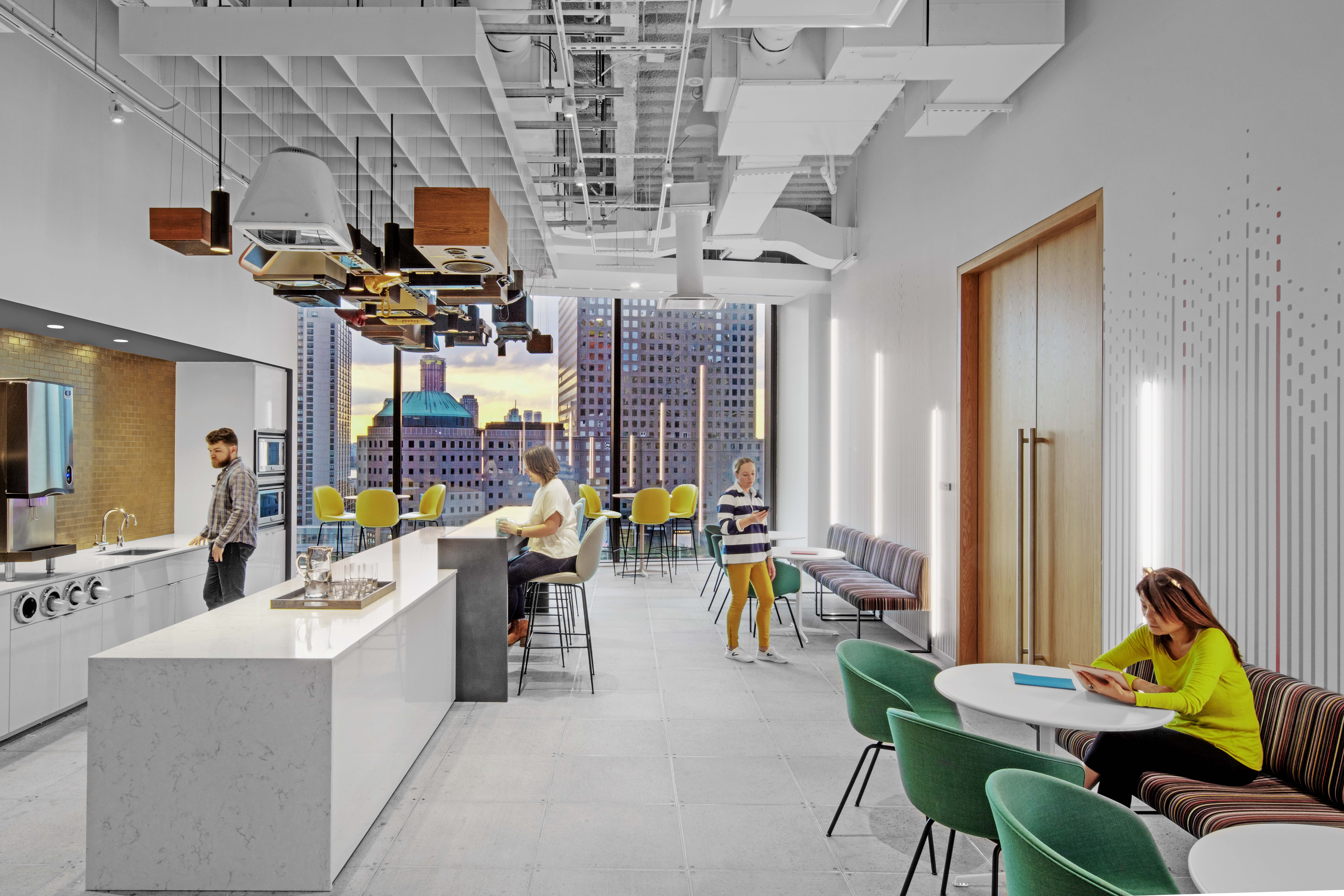Workplace is taking on a new meaning. Kay Sargent, director of HOK’s global WorkPlace practice, shares how COVID-19 is already shaping the future of work.
We are living in unprecedented times. If you are fortunate enough to still be working today, it’s probably not how you were doing so just a few weeks back. But COVID-19 has not only impacted the way we are work now, it will have a lasting impact on how office workers engage going forward. From now on, we’ll all look at the workplace through a different lens. Or should we say microscope?
Advances are often made by way of major events and disruptions. September 11 taught us about evacuation protocols and designing facilities to aid exiting without adding confusion. Hurricane Katrina taught us the need for business contingency plans and the risk of single location strategies. Superstorm Sandy taught us the need to work remotely.
We are in the middle of a global pandemic and global test regarding how and where we work. For companies that have a well-established business continuity plan, this will test the viability of those strategies. For those that do not, this is a forced experiment. Many companies that were reluctant to embrace remote work before are now realizing it is a viable option that may continue to have a role in their operational and real estate strategy going forward. Others will long to return to a shared work environment for the energy, comradery and synergies that a group workplace affords.
One thing that is almost certain to be the case following COVID-19 is that everyone, and every company, will reevaluate the safety and health of their work environments. Below are several workplace strategies and changes HOK’s Workplace clients are considering as they prepare to reopen their doors:
- Consider going to a four-day work week and staggering teams across five days to reduce density by up to 20 percent on any given day.
- Reorient work points, so individuals do not directly face each other.
- Remove seats at communal tables and in conference rooms to give people additional personal space. Or transition these rooms into scrum spaces by removing the table entirely to give people more space and eliminate touchpoints.
- Transition to unassigned seating that allows employees to establish their own boundaries and pick a seat that enables distancing.
- Create clean desk policies that allow surfaces to be properly cleaned daily and update facility maintenance contracts to ensure these steps are taken.
- Enhance cleaning protocols and frequency to aid sanitization and cleanliness.
- Prioritize office furnishings made of antimicrobial materials that are easy to maintain, resist mold and bacteria growth and promote good indoor-air quality.
- Install voice activation or hands-free controls that reduce the need to contact commonly touched items.
- Switch to VOIP communication technology instead of phone handsets and eliminate shared keyboard trays.
- Provide better access to handwashing with additional sinks in the office or more hand sanitizer devices.
- Assign lockers, file drawers or storage cabinets to individuals to separate personal items.
- Remove trash cans from individual desks and replace them with a communal bin that consolidates sanitation.
- Establish screening protocols and fever checks for everyone entering the workplace.
- Increase humidity levels to 40 to 60 percent to reduce infection. Use portable humidifiers if the HVAC system does not allow for this.
- Work with building management to improve air circulation, filtration and ventilation and confirm cleaning protocols.
There will surely be additional lessons to glean once this crisis subsides. In the meantime, let’s do what we can to keep safe in our homes and remote workplaces while being mindful of how we can make our work environments healthier and more resilient when life returns to normal—the new normal.
With 35 years of experience, Kay is a recognized expert on workplace design and strategy issues. She is an award-winning designer who has worked with several Fortune 500 companies to optimize their global real estate portfolios and create innovative work environments. Kay is also the director of HOK’s WorkPlace team and a member of HOK’s Board of Directors, as well as serving on the AVIXA Board of Directors, the National ASID Foundation Research Taskforce, the IWBI Mind Advisory Team, and the Advisory Board for Work Design Magazine.
